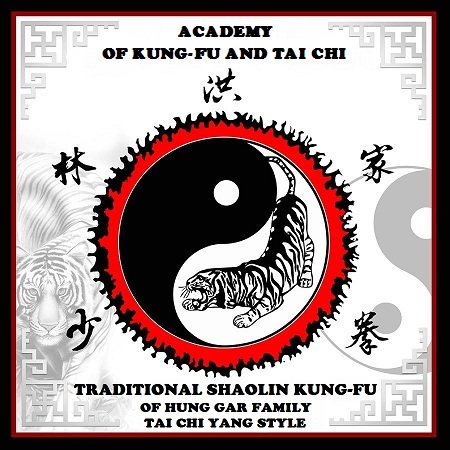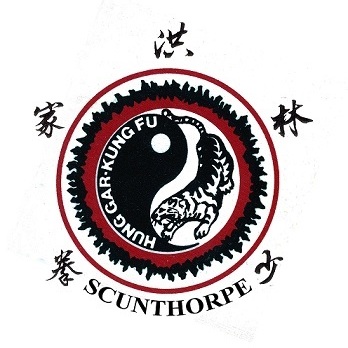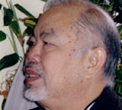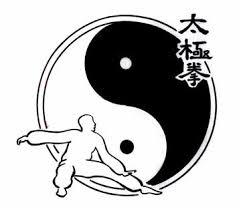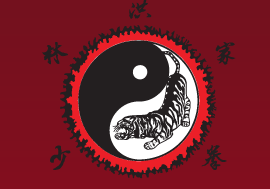
SCUNTHORPE ASSOCIATION
OF KUNG-FU & TAI-CHI
TRADITIONAL SHAOLIN KUNG-FU
OF HUNG GAR FAMILY
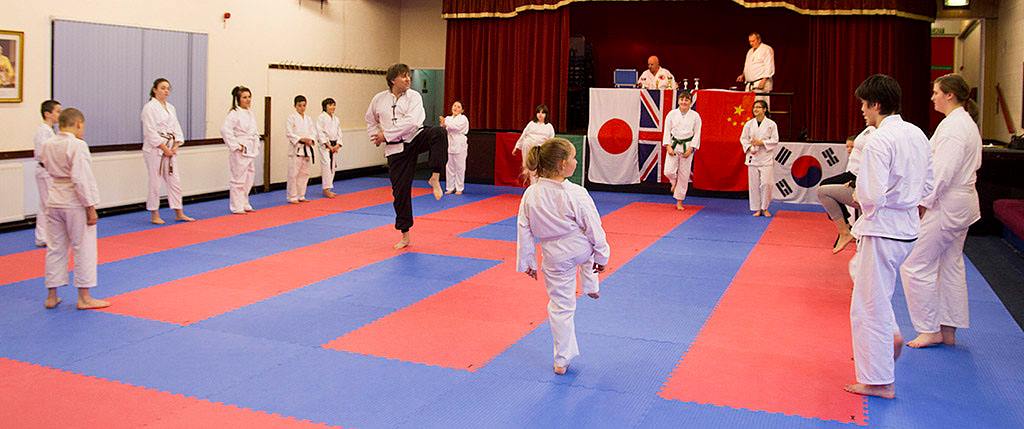

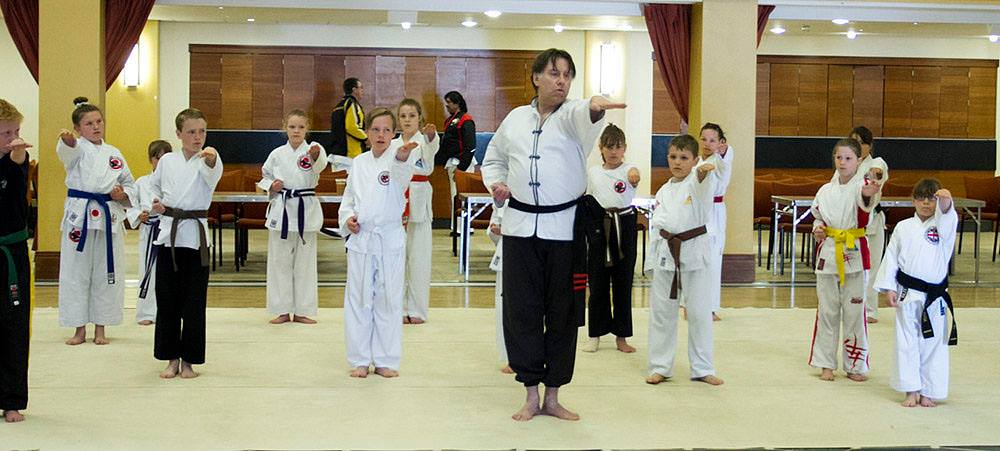
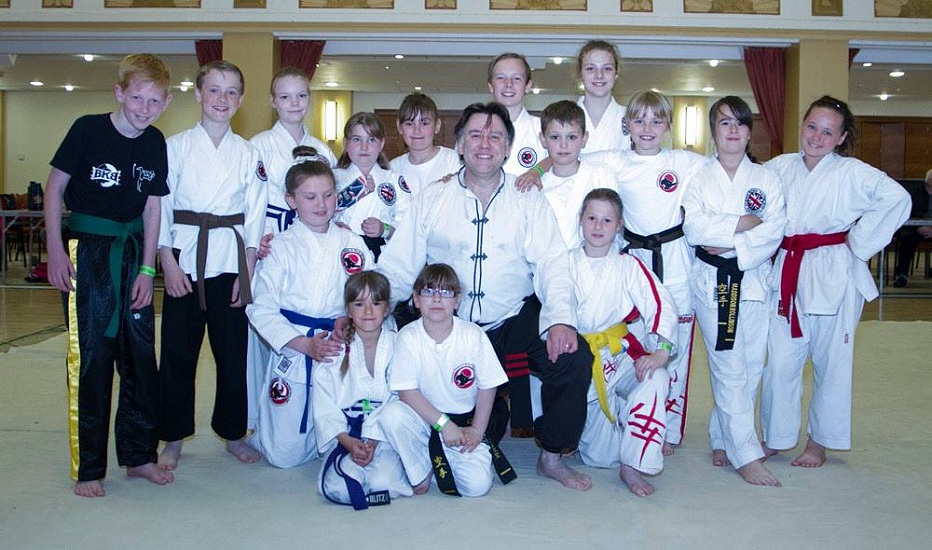
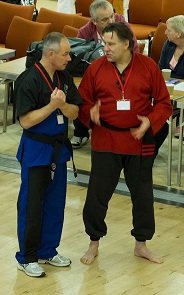
The forms (Tao Lu)
Hung Gar is characterized by powerful postures in particular the posture of the rider Ma Bo or Sei Ping Ma (Cantonese), as well as the claws of the tiger and the wings of the crane, the kicks not exceeding the belt, and the techniques of hands are favored, we find there easily the use of fists, spades and claws as well as the palm and the hand's edge corresponding to the techniques of five animals; fists for the leopard, pick for the monkey or the snake, the claws for the tiger, palm for the bear or the dragon and the edge of the hand for the crane.
Among the the most used techniques, we find the claw of the tiger (Fu Jao), the claws of the black tiger (Hei Fu Jao), the beak of crane (Hok Jui), the wings of the crane (Hok Yik), and the collar of swan or head of the crane (Hok Ding); another characteristic is the twelve bridges theory (sap yi kiu sau faat): it is twelve principles of forearms contact with the opponent transmitted from the twelve keywords and that are issued from Tid Sien Kien to allow to understand the principles of the Hung Ga's fight. They are not techniques strictly speaking but internal principles of the boxing.
According to branches we find four or five pillars in the forms of Hung Ga. All the others are forms brought back by various Masters to enrich the system according to their understanding and their experience, the five pillars are:
1) Siu Lo Han the forms of the little Buddha's apprentices
Considered as the most oldest form and which would have been created by the monk Hung Te Ti (one of the five monks who escaped from Shaolin), it would go back to XVI century; it is a symmetric form which coming from directly from the teaching of the Shaolin monastery; it emphasizes the short boxing and the long boxing as well as on the steps of the unicorn.
2) Gung Ji Fook Fu Kuen (Kong Chi Po Fu Chuan)
Control the tiger or « the tiger squatted in the posture of the bow »
So considered as a very ancient form; she would have been created by Miao Hsien and passed on to Hung
Gee Kuan. Some consider this form as the base form of Hung Ga because of its repetitive and
educational movements. It is the first form which is taught in the system, she is very important
because she puts the foundations in the style in particular the respiratory work - very important
in Hung Ga. The name of origin of the form it was Shaolin Fook Fu Kuen, Hung Gee Kuan changed the
name of the form is inserted the contributions of the crane (learnt with his wife Fang Wing Chun).
3) Fu Hok Sheun Yin Kuen (The meeting of the Tiger and the Crane)
This is doubtless the most representative form of Hung Ga is doubtless the one who allowed Hung Ga to be known as the style of the Tiger and the Crane. We think that she was created by Hung Gee Kuan and Fong Wing Chun, that she was modified by Wong Fei Hung who integra the bridges techniques (Kiu Sau) of Leung Kwan stemming from the form Tid Sien Kien, and ten techniques of hand (sap jyut sau) which Wong Fei Hung popularized by beating all his opponents; as well as the principles of the yin and the yang, five elements of seven stars, etc.; he combined the powerful movements of the tiger (jing gong) in the flexible movements and the fluids of the crane (Yau Jing).
It is in great majority this form which federates all the schools referring to the Hung Ga, she summarizes all the teaching of Hung Ga as well as her spirit and her principles, in other words it has no Hung Ga without Fu Hok Sheun Yin kuen.
The form contained originally 216 movements, it was reshaped several times according to the various branches and been of use as inspiration to Master Lung Kai Ming in the creation in 1929 of the form of synthesis Xi Ming Chuan (Fist of the Setting sun) of the school Hong Chuan.
4) Sup Yin Kuen - Le fist of ten forms (or fist of five animals and five elements)
It is a form creates by Wong Fei Hung. She allows the passage and the understanding between Fu Hok Sheun Yin kien and Tid Sien Kien, marks the passage of the extern towards the internal and five animals (monkey or snake, tiger, leopard, bear or dragon, and crane) five corresponding elements (the water, the wood, the fire, the earth and the metal); five elements in reality were added by Master Lam Sai Wing; originally this form showed only five animals but is replaced little by little by the current form, some connect continue to teach five animals or in a independent way or combine in a single form in particular the form Wu quin shi or the game of the five animals of Master Yuen Yik Kai (which also taught a form of the five fists dragons corresponding to the five elements).
5) Tid Sien Kien - the wire or the iron bridge
It is the most advanced form of the system, it is an internal form and concerns the work of Chi and Jing (of the breathing and the essence or the force), it is not a form of fight, the form was created by Leung Kwan (Tid Kiu Sam), formerly it was made on a sung poem, nowadays only the work of sounds and that of the feelings is kept.
It is a form dangerous to realize if we did not reach the required level, it is necessary to have climbed the various levels of Hung Ga to benefit from it, she is based on the movements of the Dragon as well as the combination of twelve bridges (sup yi kiu sao) and five elements, in every bridge corresponds a sound and an emotion (in reality they are ten sounds with syllables as "Tao Jeit", "yeh", "Hor", "Jei To" etc.
There is a very important variety of the minor said forms in the style, he would be rather boring to quote them all because more at least every branch added its forms but there are certain common with the majority of schools for example Lau Gar Kuen or fist of the family Lau introduced by Lam Cho, Mui Fa Kuen or fist of the flower of plum tree, Jin Leung or loses warrior introduces by Lam Sai Wing, Wu Dip Jeung or Loses Butterfly, Ng Lung Pa Kua Kwan or stick of eight trigrammes of five brothers, Fu Tao Seung Ngao or hooks tiger, Yu Gar Dai Pa or fork tiger of the family Yu, Gau Jie Bien or the whip of nine sections, Tiet Sien or iron fan, Gee Sau or daggers as well as forms in two as Gong Gee Fok Fu Kuen Deui Chaak or form of fight in two of Gung Ji Fook, Fu Kuen, Fu Hok Seun Yin Deui Chaak, forms in two of the Tiger and the crane, Daan Do Deui Cheung or spear against sword, Kwan Do - Dai Doh Deui Cheung or Halberd against spear, etc.
